Diabetes can cause blindness, what can be done to prevent it?
Diabetes mellitus is a disease that can lead to multi-system complications, which may lead to blindness, including two main categories, category 1 is central vasculopathy, the location of the lesion affects, compression of the optic nerve leading to central blindness. The second category is retinopathy of the fundus, which is characterized by hemorrhages in the fundus of the eye and retinal detachment leading to blindness. The causative mechanism of central blindness is mainly due to cerebrovascular infarction disease induced by large arteriosclerosis, and the disease caused by fundus retinopathy is mainly due to microcirculation disorders induced by the formation of hemangiomas of the fundus, and retinal detachment induced by the hemangiomas rupture and hemorrhage further blindness. So, in order to prevent blindness caused by diabetes patients to do?
For the prevention of blindness in diabetic patients, first of all, strict control of blood sugar, when the blood sugar is stable, the incidence of complications will be reduced, but also need to strictly control the factors that lead to increased vascular pressure, such as in the life of the mood to maintain smooth, avoid anxiety, if at the same time combined with hypertension, but also need to control the blood pressure is stable.
It is also important to be aware of the different types of causes of insomnia in diabetics:
1, central blindness, also need to do the annual testing of the degree of atherosclerosis, if atherosclerotic tendency, timely take anti-atherosclerotic drugs.
2. Blindness caused by fundus retinal hemorrhage requires annual fundus retinal photographic examination. If hemangioma formation is found, drugs to improve microcirculation can be taken, and if the number of hemangiomas is large, fundus laser treatment is also required. If sudden vision loss occurs, timely consultation in a diabetic department is required.
Instructor: Su Xudong, Deputy Chief Physician, Department of Endocrinology, Liaocheng People's Hospital.
Skilled in the diagnosis and treatment of endocrine system disorders such as diabetes mellitus, hyperthyroidism, pituitary gland and adrenal gland.
If you find this article useful, please feel free to like or recommend it to your friends and follow [Medlink Media].
Diabetic retinopathy is one of the diabetic microangiopathies. The incidence of diabetic ophthalmopathy increases with the duration of diabetes. Severe diabetic eye disease can even lead to blindness.
Therefore, diabetic eye disease should be prevented early, and the specific preventive measures are as follows:
1. Strictly control blood sugar, blood pressure and blood fat. Take medication on time, control your diet, and exercise moderately to bring your blood sugar up to standard. Studies have found that if fasting blood sugar is less than 7.0mmol/L, 2-hour postprandial blood sugar is less than 10.0mmol/L, and glycated hemoglobin is less than 7.0%, then the incidence of diabetic retinopathy will be reduced by 50%-70%. Also pay attention to lipid regulation and blood pressure reduction, and take blood pressure medication and lipid regulating medication on time if necessary.
2. Regular medical checkups, including blood glucose, blood lipids, blood pressure, electrocardiograms, funduscopic examinations, etc., for early detection and treatment of problems. Once diabetic patients are diagnosed, they should go for eye examination, because some patients have already suffered from eye complications when they are diagnosed, and they should follow the doctor's instructions for regular review. If you already have eye complications, treat them as soon as possible.
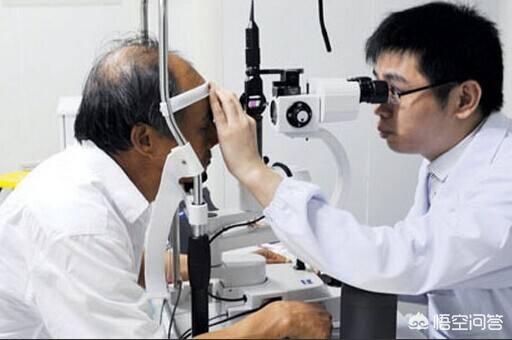
3、Quit smoking, limit alcohol, eat a light diet, eat less high-calorie, high-fat and spicy stimulating food. Pay attention to eye hygiene, do not look at the computer for a long time, cell phone, avoid eye fatigue.
Diabetic patients with poor long-term glycemic control can develop a variety of complications, of which eye lesions are one of the more common.
Diabetic eye lesions may occur in all parts of the eye, such as fundopathy, the most common of the diabetic lesions and the most common cause of blindness in diabetics. Blindness is caused by retinal detachment, fundus hemorrhage, and macular degeneration, and treatment is generally ineffective if present.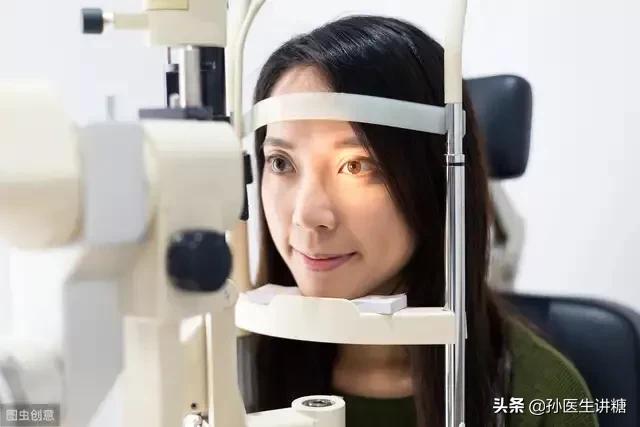
And if a fundopathy is present, it may progress on its own off the diabetic trajectory, meaning that if a diabetic develops a proliferative fundopathy lesion, a condition in which there is a hemorrhage in the fundus of the eye, even if the blood glucose returns to the normal range, the eye lesion can no longer improve, and the eye lesion continues to develop to a further degree.
Therefore, early prevention is very important to keep blood glucose stable for a long time and avoid complications. Early screening for complications and timely treatment such as medication and laser treatment are necessary when vascular lesions of the fundus, such as microangiomas, are detected.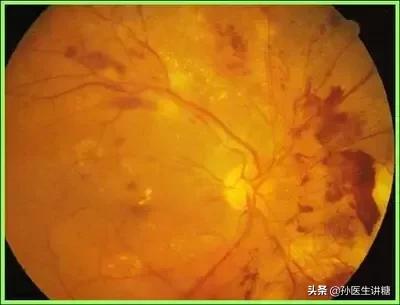
It is recommended that a new diagnosis of diabetes be followed by a fundus and vision examination to clarify your eye condition, and then be reviewed annually, or 3 or 6 months if lesions appear. It is very important for maintaining vision!
Follow me to see my previous posts:Diabetic: I look into your face, is God covering the curtain before my eyes. Learn more about diabetic eye disease! Welcome to leave a message to exchange!
Diabetic eye disease is one of the major chronic complications of diabetes and is the leading cause of blindness, with the incidence of binocular blindness in diabetic patients 25 times higher than in the general population. Diabetic eye diseases include uropathic retinopathy, cataract, and catabolic vascular glaucoma. Among them, diabetic retinopathy has the highest incidence and the greatest impact on vision.
Clinical manifestations include vision loss, fundus hemorrhage, macular edema, and in severe cases, retinal detachment and even blindness. The occurrence of diabetic retinopathy is related to poor glycemic control, long duration of the disease, and old age, and has nothing to do with gender. Diabetic retinopathy usually occurs after 5 to 10 years of illness. Once a diabetic patient develops eye disease, the condition progresses very quickly, and if not treated early, it can lead to blindness, so it must not be taken lightly.
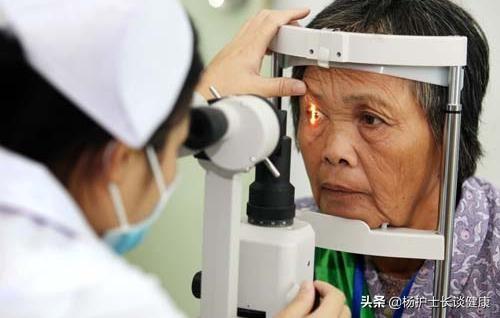
To minimize the occurrence and progression of diabetic retinopathy, diabetic patients should pay attention to the following points:
1. Regular eye examinations
In the early stages of diabetic retinopathy, patients usually do not feel it, but once they realize that their vision has decreased significantly, the disease is often difficult to reverse. Therefore, all diabetic patients should have a comprehensive eye examination when they are first diagnosed, and then have their vision and fundus examined at least once a year, and once every six months for those who have been suffering from the disease for more than five years, so that retinopathy can be detected and treated as early as possible.
2. Appropriate treatment for those with diabetic retinopathy
The basis of preventing and treating diabetic retinopathy is to actively treat diabetes, so that blood sugar and blood pressure can be kept in the normal range for a long time, which can effectively prevent or slow down the occurrence and development of retinopathy. Laser treatment can be used for fundopathy with more bleeding and stage III or above.

3. Improving lifestyles
Eat a reasonable diet, stop smoking, stop drinking, get a good night's sleep, and avoid mood swings.
4. Raising awareness of self-care
People over the age of 40 should have their blood sugar and urine sugar checked regularly and have their vision and fundus examined frequently; it is from a fundus examination that many patients discover they have diabetes.
Diabetes is now a major global health concern and can cause a wide variety of eye diseases such as glaucoma, vitreous hemorrhage, optic neuropathy, and most commonly retinopathy and cataracts. Diabetic retinopathy has also become the leading cause of blindness in adults.
Since vision damage caused by diabetic eye disease is often irreversible, the earlier it is prevented and treated, the better.
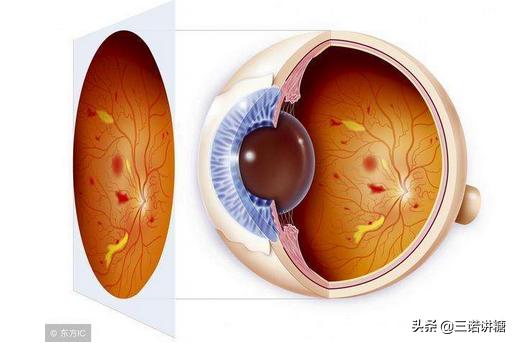
How can I prevent diabetic eye disease?
1. Maintain a healthy lifestyle
Poor lifestyle that affects the development of diabetic eye disease including diabetic retinopathy.
Diabetic patients must quit smoking and alcohol; diet should be light, less spicy, stimulating and high-fat food; appropriate exercise, exercise not only helps to reduce blood sugar, but also helps to reduce the occurrence of diabetic eye disease; mental workers should pay attention to avoiding visual fatigue caused by reading for a long time, long-time use of computers.
2、Control blood pressure and blood lipids
It is important to control blood pressure and blood lipids. Poor control makes it easy to develop diabetic eye disease.
3. Regular review
Diabetic patients aged between 10 and 30 years old should go to the ophthalmology department of the hospital for a comprehensive examination in the fifth year after the diagnosis of diabetes mellitus; if the age of the diabetic patient is older than 30 years old, he or she should start to go to the ophthalmology department of the hospital for a comprehensive examination at the time of diagnosis. The examination should be repeated once a year thereafter, but for those with retinopathy, the examination should be repeated several times a year; for those without retinopathy, the examination can be repeated at slightly longer intervals.
Women with diabetes should have their fundus examined in a hospital within 12 months prior to planned pregnancy. After pregnancy, the fundus should be examined again during the lth trimester and then periodically thereafter.
4. Drug treatment
Medication is divided into traditional Chinese medicine (TCM) and western medicine (Western medicine), with TCM focusing on nourishing the liver and kidneys, such as Liufidihuang Pill; and Western medicine focusing on nourishing the optic nerve and improving local blood circulation. Through medication, the condition of diabetes mellitus can be significantly relieved, while the vision of the eyes will not be further aggravated.
Early treatment of diabetic eye disease can usually achieve better results, and patients are advised to maintain a good lifestyle, as well as regular checkups to check vision, fundus and eye conditions. Follow the doctor's instructions and take an active role in the treatment.
Thank you for reading this article, if you agree with the views expressed in the article, please give me a like, follow {Sano Sugar}, and if you have any questions, please invite me to answer them!

Diabetes is due to insulin deficiency or relative lack of patients with long-term chronic hyperglycemia, belongs to the metabolic diseases, with hypertension, hyperlipidemia and other diseases often co-exist, become a major threat to human health, long-term disorders of glucose metabolism can lead to a lot of systemic damage, it is understood that the heart, kidneys, eyes, blood vessels and other organ damage and diabetes has a great relationship. For the subject mentioned the blindness caused by diabetes, the age is not common, but it is not sensationalized, diabetes-induced eye lesions in the clinical Shanghai is very common.
Diabetic retinopathy is the most common form of diabetic eye disease and is the main cause of blindness. Diabetes causes circulatory disorders of the microvessels and thickening of the basement membrane, which is common in patients with diabetes that has lasted more than 10 years, and can be categorized into non-proliferative retinopathy and proliferative retinopathy according to the severity of the disease. In addition to retinopathy, ocular changes such as glaucoma, cataract, and refractive changes may also occur and require special clinical attention.

In addition to eye lesions, there are many other chronic complications of diabetes mellitus. When the microvessels of the whole body are involved, in addition to retinopathy, diabetic nephropathy may also affect the kidneys, which is a common cause of renal failure; cardiac microvascular lesions and myocardial metabolism disorders are also complications of diabetes mellitus when the microvessels are involved, which can cause extensive necrosis of the myocardium, and in severe cases, it may lead to sudden death. In addition to microangiopathy, macrovascular disease, neurological complications and diabetic foot are also very common complications of diabetes.
For the prevention of the above complications, the most important and crucial point is undoubtedly the strict control of blood glucose, in addition, the control of hypertension, hyperlipidemia and other diseases is also of great significance to the prevention of the above complications.

Answer: Chen Yongmiao, M.S., M.A.
Welcome to Life Calling for more useful health knowledge.
Diabetes causes blindness is due to the body for a long time in the high blood sugar state led to the occurrence of diabetic neuropathy, causing diabetic retinopathy and optic nerve atrophy, began to cause blurred vision, if the high blood sugar state is still uncorrected, it is easy to cause vision is getting worse and worse, more and more blurred vision, and ultimately lead to all the things can not see, resulting in blindness.
Therefore, the best way to prevent blindness caused by diabetes is to first lower the blood sugar to the normal range so that the body's hyperglycemic state can be corrected. In order to correct the high blood sugar state of the body must be under the guidance of the doctor strict diabetic diet, strict physical exercise, on time and according to the amount of oral hypoglycemic drugs, if necessary, subcutaneous injection of insulin. And then make the body blood sugar in a normal state for a long time. Secondly, wear presbyopia glasses to reduce the pressure on the eyes to see things, so that the eyes to see things blurred to relieve the situation. Finally, try to see less cell phone, less TV, less Internet, less books, more closed eyes to rest the eyes, work half an hour, let the eyes to the distance for a while.
Follow the headline number of "medical catechism", more health Q&A easy to see!
Thank you. Diabetes can cause a very large number of complications, of which retinopathy and ultimately blindness are considered the more serious ones, and this is irreversible. The way to prevent it is to detect diabetes at an early stage and control your blood sugar. Usually pay attention to whether there is a lot of drinking, eating, urinating, weight loss and other symptoms, regularly check a blood sugar (very cheap 5-15 yuan range), as long as the control of blood sugar, then there is no problem, you can enjoy life happily. 😊 I hope my answer can help you.
Since 1992, the "World Diabetes Day" initiated by the International Diabetes Federation and WHO has been held on November 14 every year as scheduled, and this year is the 30th "World Diabetes Day", as one of the three major chronic diseases in the world. As one of the three major chronic diseases in the world, the number of diabetic patients is increasing year by year, and China has become the country with the largest number of diabetic patients in the world, and the prevalence of type 2 diabetes among adults in China is as high as 12.8%, according to a research study published in 2019 [1].
For patients with type 2 diabetes, the most common typical symptoms are "three more and one less", i.e., eating more, drinking more and urinating more, accompanied by weight loss;
In addition, diabetes mellitus is also prone to acute and chronic complications and concomitant diseases, such as cardiovascular disease, neuropathy, hand and foot lesions, renal disease, and skin infections, among others [2].

These symptoms are very easy to be ignored in the early stage of type 2 diabetes, and once poorly controlled, many complications seriously erupted, it will bring pressure to the patient in all aspects, including physical, psychological and medical, so active intervention and treatment is the biggest responsibility of diabetic patients to their own physical health.
Of these, dietary interventions are arguably the most intuitive, effective and easy to administer diabetes treatment [3].
What do patients need to pay attention to in their daily diet? In a nutshell, there are three main principles that diabetics should follow in their dietary regimen:
Nutrition is balanced, calories are moderate, and staple foods are rationed [4].

- Balanced daily nutrition
According to research studies, strengthening nutritional therapy and ensuring scientific and reasonable nutritional intake can help to improve the therapeutic effect of diabetic patients and avoid metabolic disorders [5].
Nutritional balance requires diabetic patients to rationally arrange the diet structure, the human body must Dietary fiber, various types of vitamins, minerals... All seven nutrients need to be consumed to avoid a single dietary structure leading to malnutrition;
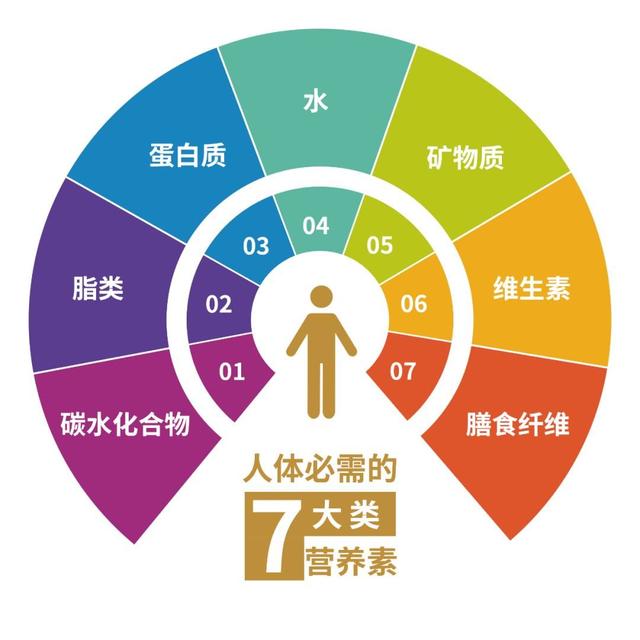
- Strictly control the total daily calorie intake.
For diabetic patients, long-term consumption of food beyond the total calories will not only affect blood sugar and blood lipids, but also cause obesity, aggravate the burden on the body, serious and accelerate the outbreak of various complications;
- Staple food rationing.
To ensure that staple foods account for more than half of our total daily calorie intake, but also pay attention to the mix of coarse and fine, whole grains, mixed legumes accounted for 1/3 of the total intake of staple foods. such as the consumption of other foods containing more carbon water (such as sweet potatoes potatoes, etc.), to reduce the amount of staple food intake accordingly.
Of course, on top of the daily diet, some specific groups of people:Such as postoperative diabetic patients, diabetic patients with diseases and elderly diabetic patients, the overall physical quality is relatively poor, limitations are more, simple daily dietary adjustments can not meet more nutritional needs, it is necessary to especially take some more accurate, professionalMedical Nutrition Therapy (MNT), or meal replacement therapy, is used to make up for the nutritional supplements that are difficult to achieve with a sugar addict's daily diet.
For postoperative diabetics:
Post-operative immunity is lowered, coupled with high blood glucose and insufficient resistance to external bacteria, it is easy to produce wound infection or wound not easy to heal after surgery. At this time, patients are in urgent need of supplementing a large amount of high-quality protein and nutrients, re-enforcement of their own immune system to accelerate wound healing, but for diabetic patients, some ordinary nutrients can easily cause elevated blood glucose, so you need to Abbott's Energizer, which is suitable for diabetic patients to consume professional nutrients, while supplementing balanced nutrition and stabilizing blood glucose.
This question and answer are from the site users, does not represent the position of the site, such as infringement, please contact the administrator to delete.